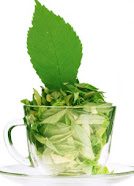JUNETEENTH –
THE ELEVENTH U.S. FEDERAL HOLIDAY by Sheryl Jordan
The History
For some people,
Juneteenth is just another day off work or school, but there is so much more
behind the holiday and its history. It is an important part of U.S. history, which changed America in many ways. The freedom it represented for so many was astounding.
Juneteenth is
short for June Nineteenth, the day in 1865 on which slaves in Texas were
officially freed. On June 18, 1865, Union soldiers arrived in Galveston, Texas. I'm sure the people of the city were wondering what was going on. The following day, as Major General Gordon Granger walked through the town and informed the community about President Lincoln's signing of the proclamation, I'm sure some folks were not happy about it. Some enslavers were probably pretty sure being slave owners would be part of their lives forever. Perhaps some of the slaves thought they died and went to heaven! Some may have been scared and not sure they were hearing the news correctly. Although Emancipation Proclamation was issued two and a half years prior,
enslavers were held responsible for telling the enslaved they were free, and
some ignored the directive. Major General Gordon demanded Galveston locals
comply with the proclamation. This was a day that changed many lives forever.

Juneteenth did
not end slavery. The Emancipation Proclamation ended slavery in Confederate
states during the Civil War but not in Union states such as Maryland, where people were still practicing involuntary servitude. Only through the Thirteenth Amendment to the
United States Constitution did emancipation end slavery and involuntary servitude in the United States, signed on February 1, 1865, by President Lincoln.
The former
slaves rejoiced in their new freedom. They began celebrating through
prayer, song, and dance. One can only imagine the encouragement and feelings of
empowerment the former slaves experienced emotionally. They must have had the euphoria after two hundred-plus years of African Americans being enslaved and suddenly,
they were free!
Texas being the last state in which the proclamation was announced, was the first state to
recognize Juneteenth statewide. The annual holiday to commemorate the official day
enslaved African Americans in Galveston were freed began in 1866. When African
Americans migrated from the South, the holiday spread across the country.
Juneteenth is
also known throughout the world as Jubilee Day, Emancipation Day, Freedom Day, Black Independence
Day, Cel-Liberation Day, and Second Independence Day. Congress passed the Juneteenth
National Independence Day Act in June 2021, one day after the Senate unanimously
passed the bill. It became a federal holiday when President Joe Biden signed
the Act on June 17, 2021. After the murders of George Floyd and Breonna Taylor, Democratic Senator Ed Markey first introduced the Juneteenth Bill in 2020, however, it didn't get passed.
"Today’s Senate passage of our legislation to commemorate
Juneteenth as a federal holiday will address this long-ignored gap in our
history, recognize the wrong that was done, acknowledge the pain and suffering
of generations of slaves and their descendants, and finally celebrate their
freedom," Markey said after the bill passed on June 17 of 2021. (USA
Today, 2022)
The Flag
Did you know
there is an official Juneteenth flag to honor the day which represents the
history and freedom of the American Slaves and their descendants? It was
designed by Ben Haith, founder of the National Juneteenth Celebration
Foundation (NJCF) in 1997, and other collaborators Lisa Jeanne Graff, illustrator brought the group's vision to life.
The white star in
the center represents “Texas, the Lone Star State” and the freedom of African
Americans in all fifty states.
The burst
outlining the star is inspired by a nova, meaning a new star.
The
arc extending across the flag's width represents a new horizon - a new freedom,
a new people, new opportunities, and promises that lay ahead for Black Americans.
In 2007, the date June 19, 1865, was added commemorating
the day the enslaved African Americans in Galveston were told of their
emancipation.
In
addition to the official flag, many communities also include the PAN-African
flag during Juneteenth celebrations. The flag’s colors are red, black, and green.
Per the Pan-African Alliance:
Red represents the millions of Black
men and women who lost their lives while enslaved, as civil rights leaders, and those unjustly murdered.
Black represents the melanin of Black
people, the rich soil of the Nile valley, and the unification of
the African diaspora.
Green
stands for fertility, productivity, and prosperity and is the
fertile cradle of Africa.
Celebrations
Juneteenth
is celebrated in many ways around the world which include:
Flag-raising ceremonies.
Cookouts
Parades
Festivals
Block parties
Church services
Ceremonies to honor community service
Red color food and beverages – symbolize the bloodshed
of enslaved ancestors
due to the transatlantic slave trade.
I attended Jubilee events at Powderhorn
Park in Minneapolis, MN as a teenager with my sister and friends and later with
my husband. Although I didn’t really know the history of Juneteenth during
those times, I always enjoyed the festival. I love the unity of people honoring the importance of Juneteenth. I felt
connected with fellow Americans, of all races in attendance and the celebrations.
This year I plan to attend various Juneteenth events with my family. My husband and I discuss each holiday's history and its significance with our grandchildren. Trust me, we will be discussing Juneteenth
with them again this year. We want to ensure they understand the holiday and why it is an
important part of history to be celebrated as other holidays they are familiar with.
Juneteenth celebrations can be small and personal or huge and elaborate. Have you celebrated Juneteenth in
past years? Will you celebrate Juneteenth this year? If so, how?
Not sure how to celebrate Juneteenth?
You can find suggestions and listings of 2023 Juneteenth Events near you on the
internet.
References:
https://www.usatoday.com/story/news/2022/06/15/juneteenth-us-federal-holiday/7582744001/
https://www.cnn.com/2022/06/17/us/juneteenth-flag-meaning-explainer-cec/index.html#:~:text=The%20red%2C%20white%20and%20blue,became%20Americans%20under%20the%20law
https://www.archives.gov/milestone-documents/13th-amendment#:~:text=The%2013th%20Amendment%20to%20the%20United%20States%20Constitution%20provides%20that,place%20subject%20to%20their%20jurisdiction.%22
Related Articles
and Videos
https://www.pbs.org/wnet/african-americans-many-rivers-to-cross/history/what-is-juneteenth/
https://www.juneteenth.com/history/
https://www.pewresearch.org/short-reads/2022/06/17/nearly-half-of-states-now-recognize-juneteenth-as-an-official-holiday/
https://www.history.com/news/what-is-juneteenth
https://www.youtube.com/watch?v=KBtIHTcDfYg
https://www.youtube.com/watch?v=i8EY9e7Vjis



















